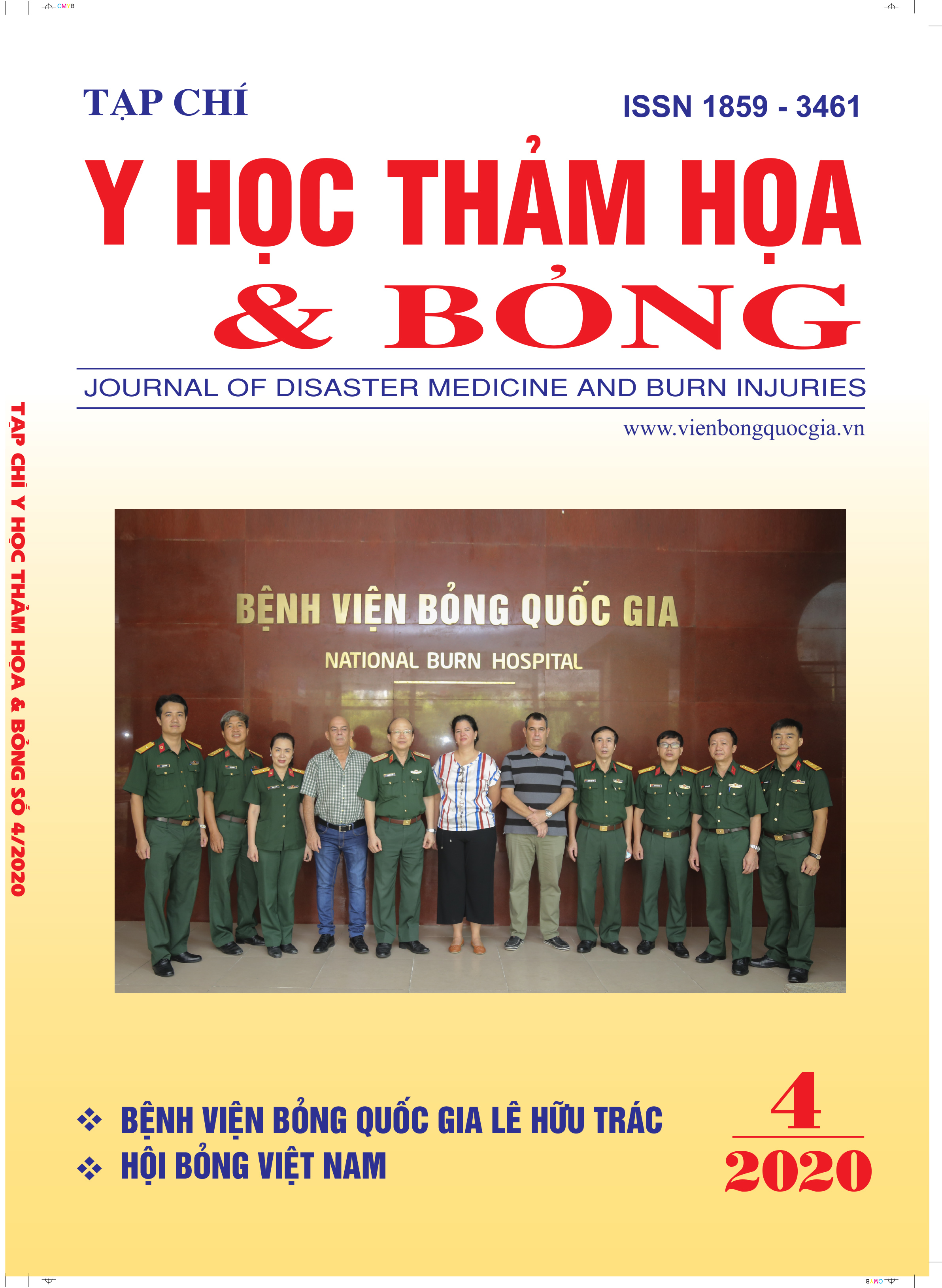Nghiên cứu xây dựng quy trình sử dụng da đồng loại bảo quản bằng Glycerol 85% điều trị vết thương bỏng sâu
Nội dung chính của bài viết
Tóm tắt
Da đồng loại bảo quản bằng Glycerol (GPA: Glycerol preserved allograft) đã được nghiên cứu sử dụng từ những năm 1980. Tuy nhiên, việc mở rộng áp dụng GPA còn có nhiều khó khăn liên quan đến văn hóa, nguồn lực, khoa học kỹ thuật, đặc biệt ở các nước đang phát triển.
Hiện nay, tại Bệnh viện Bỏng Quốc gia đã nghiên cứu thu hồi, bảo quản da đồng loại bằng Glycerol 85%. Nhằm ứng dụng rộng rãi GPA trong lâm sàng, chúng tôi đã xây dựng quy trình sử dụng GPA trong điều trị vết bỏng sâu và ứng dụng trong điều trị cho 30 người bệnh bỏng nặng; kết quả cho thấy: Tấm da đồng loại bảo quản bằng Glycerol 85% bám dính tốt trên nền ghép, có tác dụng che phủ, bảo vệ, ảnh hưởng tốt đến quá trình liền vết thương bỏng sâu.
Chi tiết bài viết
Từ khóa
da đồng loại, da đồng loại bảo quản bằng Glycerol
Tài liệu tham khảo
2. Nguyễn Ngọc Tuấn (2012), “Ghép da đồng loại”, Tạp chí Y học thảm hoạ và Bỏng,1: 32-36.
3. Lê Thế Trung (2003), Bỏng - những kiến thức chuyên ngành, Nhà xuất bản y học, Hà Nội.
C. Druecke, L. Steinstraesser, H.H Homann, et al (2002), “Current indications for glycerol-preserved allografts in the treatment of burn injuries”, Burns, 28, pp. 26-30.
4. Kagan R. J., Robb E. C. and Plessinger R. T. (2005), “Human skin banking”, Clinics in laboratory medicine.25 (3): 587-605.
5. Khoo. TL, Halim AS, Saad AZ et al (2010), “The application of glycerol-preserved skin allograft in the treatment of burn injuries: an analysis based on indications”, Burns, 36 (6): 894-904.
6. Kreis R., Mackie D., Vloemans A.. et al (1993), “Widely expanded postage stamp skin grafts using a modified Meek technique in combination with an allograft overlay”, Burns.19 (2): 142-145.
7. Leon-Villapalos J., Eldardiri M. and Dziewulski P. (2010), “The use of human deceased donor skin allograft in burn care”, Cell and tissue banking.11 (1): 99-104.
8. Liangpeng Ge, Zhenggen Huang and Hong Wei (2011), “Skin Grafts Preservation”, In Skin Grafts – Indication, Application and Current Research; Publisher InTech.
9. Michel H E Herman (2011), “Preservation method of allografts and their (lack of) influence on a clinical result in partial-thickness burns”, Burns, 37(5):873-81.
10. Moerman E, Middlekoop E, Mackie D et al (2002), “The temporary use of allograft for complicate wounds plastic surgery”, Burns, 28, pp. 13-15.
11. Richters C., Hoekstra M., Van Baare J.. et al (1996), “Morphology of glycerol-preserved human cadaver skin”, Burns.22 (2): 113-116.
12. Richters C., Hoekstra M., Du Pont J.. et al (2005), “Immunology of skin transplantation”, Clinics in dermatology.23 (4): 338-342.
13. Saad A. M., Khoo T., Dorai A.. et al (2009), “The versatility of a glycerol-preserved skin allograft as an adjunctive treatment to free flap reconstruction”, Indian journal of plastic surgery: official publication of the Association of Plastic Surgeons of India.42 (1): 94.
14. Vloemans AF, Scheinemanchers MC, Middelkoop E, Kreis RW (2002), “The use of glycerol-preserved allografts in Beverwijk Bern Center: a retrospective study”, Burns; 28 Suppl1: pp 2-9.
15. Vloemans A., Middelkoop E. and Kreis R. (2002) “A historical appraisal of the use of cryopreserved and glycerol-preserved allograft skin in the treatment of partial-thickness burns”. Burns.28: 16-20.


